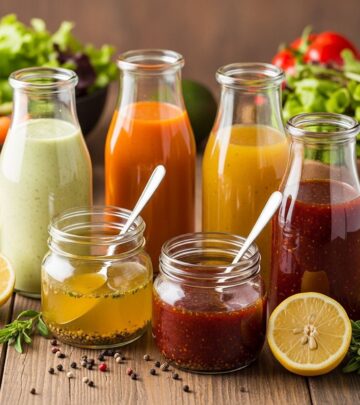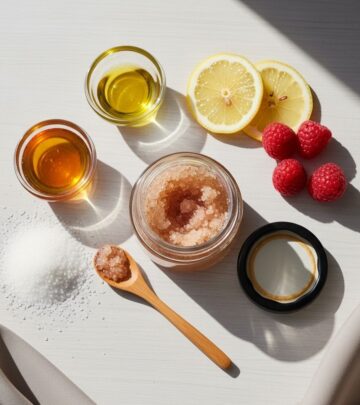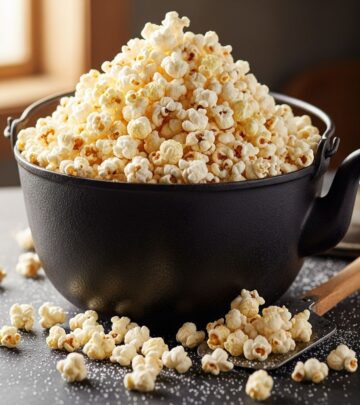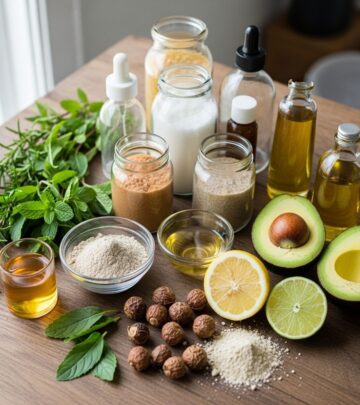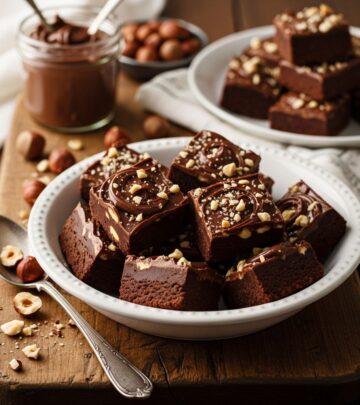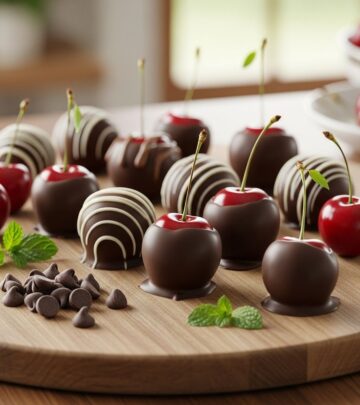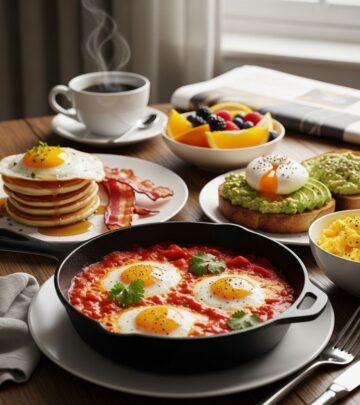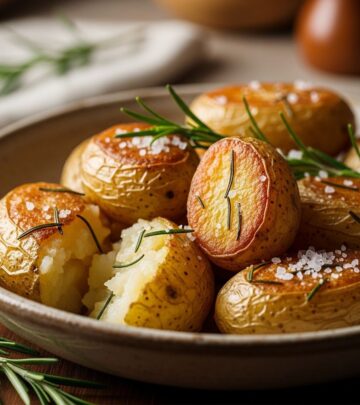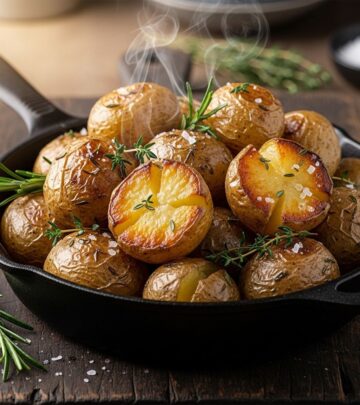Crème Brûlée Recipe: Expert Guide To Perfect French Custard
Master the art of creating restaurant-quality crème brûlée in your own kitchen with simple ingredients
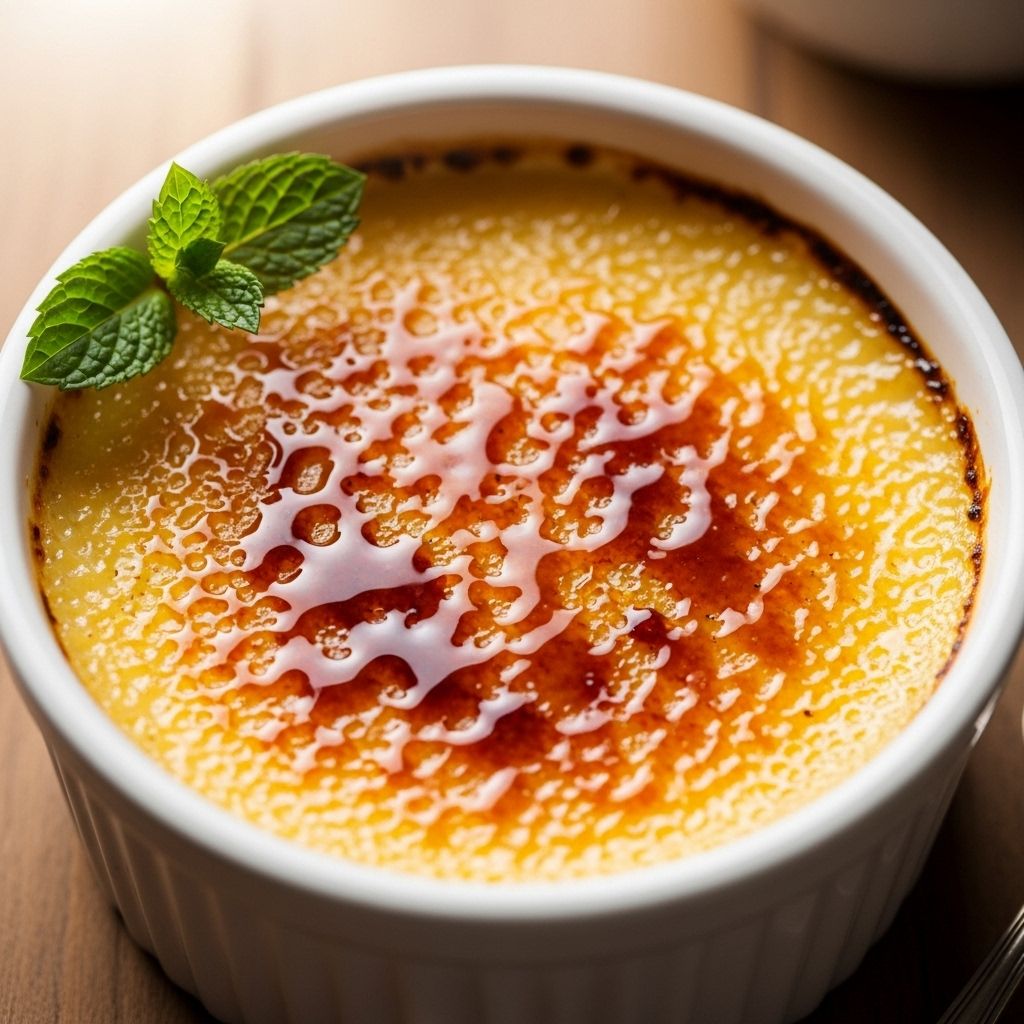
Image: HearthJunction Design Team
Introduction to the Perfect Crème Brûlée
Crème brûlée stands as one of the most elegant and impressive desserts in French cuisine, yet remains surprisingly accessible for home cooks to master. This classic dessert features a rich, creamy vanilla custard base topped with a layer of caramelized sugar that cracks delightfully when tapped with a spoon. Despite its reputation as a sophisticated restaurant dessert, perfect crème brûlée requires just a handful of quality ingredients and careful attention to technique.
The beauty of crème brûlée lies in its contrasting textures and temperatures—the cool, silky custard beneath the warm, brittle sugar crust creates a sensory experience that has delighted diners for centuries. Originally created in France (the name literally translates to “burnt cream”), this dessert has become a staple on fine dining menus worldwide, yet can be recreated perfectly in your own kitchen with the right guidance.
The History and Origin of Crème Brûlée
While firmly established as a French classic today, the true origins of crème brûlée remain somewhat contested. Some culinary historians trace it back to 17th century France, while others suggest earlier versions existed in England (where it was known as “burnt cream”) or Spain (similar to Catalan cream). Regardless of its precise beginnings, the dessert gained significant popularity in French haute cuisine during the 19th century.
The earliest documented recipes for crème brûlée appear in François Massialot’s cookbook from 1691, though the dessert has evolved over centuries to the version we recognize today. What has remained consistent is the fundamental appeal of this dessert: simple ingredients transformed through technique into something truly extraordinary.
Essential Ingredients for Perfect Crème Brûlée
One of the most appealing aspects of crème brûlée is its short, straightforward ingredient list. Quality matters tremendously with such a simple recipe, as each component contributes significantly to the final result.
The Core Ingredients
- Heavy Cream: The foundation of the custard, providing richness and body. Use the highest quality heavy cream you can find (minimum 36% fat content) for the most luxurious texture.
- Egg Yolks: These provide the thickening power and contribute to the custard’s velvety texture and golden color. Large, fresh eggs yield the best results.
- Sugar: Used both in the custard base and for the caramelized topping. Regular white granulated sugar works perfectly.
- Vanilla Extract: The primary flavoring agent that gives crème brûlée its classic taste. Pure vanilla extract provides the best flavor, though a whole vanilla bean can elevate the dessert further.
- Salt: Just a pinch enhances all the other flavors without making the custard taste salty.
Equipment You’ll Need
Beyond ingredients, successful crème brûlée requires some specific equipment:
- Ramekins: Traditional individual serving dishes, typically 4 to 6 ounces in capacity.
- Water Bath (Bain-Marie): A roasting pan or deep baking dish to hold hot water around the ramekins during baking.
- Kitchen Torch or Broiler: For caramelizing the sugar topping.
- Fine Mesh Strainer: To ensure a perfectly smooth custard.
- Thermometer: While optional, a cooking thermometer helps achieve perfect doneness.
Step-by-Step Preparation Method
Preparing the Custard Base
The foundation of any great crème brûlée is its custard base. This requires gentle heating to maintain the creamy texture without curdling the eggs.
- Preheat your oven to 325°F (163°C) and position the rack in the center of the oven.
- In a medium saucepan, heat the heavy cream until it just begins to simmer around the edges. Remove from heat immediately once you see small bubbles forming—do not allow it to boil.
- While the cream is heating, whisk together the egg yolks and sugar in a separate bowl until the mixture becomes pale yellow and slightly thickened.
- Add the vanilla extract to the egg mixture and whisk to combine.
- Temper the egg mixture by very slowly pouring about 1/4 cup of the hot cream into the eggs while whisking constantly.
- Continue adding the remaining hot cream gradually while whisking to prevent the eggs from cooking.
- Once fully combined, strain the mixture through a fine-mesh sieve to remove any potential lumps or bits of cooked egg.
Baking the Custards
The water bath method is crucial for crème brûlée, as it ensures gentle, even cooking and prevents the custards from curdling or cracking.
- Arrange your ramekins in a deep baking dish or roasting pan.
- Divide the strained custard mixture evenly among the ramekins, filling them about 3/4 full.
- Place the baking dish on the oven rack and carefully pour hot (not boiling) water into the dish until it reaches halfway up the sides of the ramekins.
- Bake for approximately 30-35 minutes, or until the custards are set but still slightly jiggly in the center. The internal temperature should reach about 170-175°F (77-79°C) if using a thermometer.
- Carefully remove the baking dish from the oven and allow the ramekins to cool in the water bath for about 10 minutes.
- Remove the ramekins from the water bath and let them cool completely at room temperature.
- Cover each ramekin with plastic wrap and refrigerate for at least 2 hours, but preferably overnight, to allow the custards to set fully.
Creating the Perfect Caramelized Top
The signature element of crème brûlée is its crackling caramelized sugar topping, which provides both textural contrast and a bittersweet flavor complement to the sweet custard.
- When ready to serve, remove the custards from the refrigerator and blot any condensation from their surfaces with a paper towel.
- Sprinkle a thin, even layer of granulated sugar over each custard (about 1-2 teaspoons per ramekin).
- For the torch method: Hold a kitchen torch 2-3 inches from the surface and move it in circular motions until the sugar melts and turns a deep amber color.
- For the broiler method: Place the ramekins on a baking sheet and position them about 2-3 inches from the broiler element. Watch carefully and rotate as needed until the sugar caramelizes evenly, which typically takes 2-3 minutes.
- Allow the caramelized sugar to cool and harden for 1-2 minutes before serving.
Tips for Achieving Restaurant-Quality Results
Even with simple ingredients, a few professional techniques can elevate your crème brûlée from good to exceptional:
Temperature Control
Temperature management is perhaps the most crucial factor in successful crème brûlée. The custard must be heated enough to set properly but not so much that it curdles.
- Never allow your cream to boil fully—just bring it to a gentle simmer.
- Temper the eggs gradually with the hot cream to prevent cooking them.
- The water bath should be hot but not boiling when added to the baking dish.
- A slightly jiggly center when removing from the oven ensures a silky texture.
Texture Perfection
The hallmark of exceptional crème brûlée is its texture—silky smooth without any graininess or air bubbles.
- Always strain your custard mixture before baking.
- Avoid creating air bubbles by whisking gently and not overbeating.
- Let the custards rest in the refrigerator for at least 4 hours (preferably overnight) for the best texture.
- Keep the caramelized sugar layer thin for the ideal crack-to-custard ratio.
Creative Variations on Classic Crème Brûlée
While traditional vanilla crème brûlée is perfect in its simplicity, the basic technique lends itself to numerous creative variations:
Flavor Infusions
- Chocolate: Add melted chocolate to the warm cream for a decadent chocolate version.
- Coffee: Infuse the cream with coffee beans or add espresso powder for coffee crème brûlée.
- Citrus: Add lemon, orange, or lime zest to the cream as it heats.
- Spices: Cinnamon sticks, cardamom pods, or star anise can be steeped in the cream.
- Liqueurs: A splash of Grand Marnier, Baileys, or Kahlúa adds sophisticated flavor.
Seasonal Inspirations
Adapt your crème brûlée to showcase seasonal ingredients:
- Spring: Lavender-infused or fresh berry topped versions.
- Summer: Peach-infused or topped with fresh tropical fruits.
- Fall: Pumpkin spice or maple-infused variations.
- Winter: Peppermint, gingerbread, or eggnog-inspired flavors.
Troubleshooting Common Issues
Even experienced cooks occasionally encounter challenges with crème brûlée. Here are solutions to common problems:
Custard Problems
- Curdled Custard: Usually caused by overheating or not using a water bath. Ensure gentle, slow heating and always use the water bath method.
- Runny Center: Typically undercooked. Increase baking time slightly and ensure proper oven temperature.
- Grainy Texture: Often results from egg proteins cooking too quickly. Temper eggs properly and strain the mixture.
- Bubbles or Holes: Caused by overwhisking or too high oven temperature. Whisk gently and ensure moderate oven temperature.
Caramelization Issues
- Sugar Won’t Caramelize: Usually due to moisture on the surface. Blot custards dry before adding sugar.
- Burnt Sugar: Result of too much heat. Use a gentle touch with the torch or watch the broiler carefully.
- Sugar Layer Too Thick: Creates an overly hard crust. Use less sugar and spread it more evenly.
Make-Ahead and Storage Guidelines
Crème brûlée is an ideal make-ahead dessert for entertaining:
- The custards can be prepared and baked up to 3 days in advance and stored covered in the refrigerator.
- Always caramelize the sugar topping just before serving for the best texture contrast.
- Once the sugar has been caramelized, the dessert should be enjoyed within an hour for optimal texture.
- Leftover crème brûlée (without caramelized topping) can be stored covered in the refrigerator for up to 3 days.
Perfect Pairings and Serving Suggestions
While crème brûlée is exquisite on its own, thoughtful accompaniments can enhance the experience:
- Fresh Berries: A few fresh raspberries, blackberries, or sliced strawberries provide color and tangy contrast.
- Shortbread Cookies: A simple butter cookie offers textural complement.
- Dessert Wine: Sauternes, late-harvest Riesling, or Moscato d’Asti pair beautifully.
- Coffee: Espresso or French press coffee balances the dessert’s sweetness.
- Garnishes: A sprig of mint, edible flowers, or a light dusting of powdered sugar can add visual appeal.
Frequently Asked Questions
Q: Why did my crème brûlée crack during baking?
A: Cracking typically occurs when the custards are baked at too high a temperature or without a proper water bath. The water bath provides gentle, even heat, preventing the edges from cooking too quickly compared to the center. Always ensure the water comes halfway up the sides of your ramekins.
Q: Can I make crème brûlée without a kitchen torch?
A: Yes, you can use your oven’s broiler instead. Place the chilled custards on a baking sheet about 2-3 inches from the broiler element, watching carefully as the sugar caramelizes. Rotate them if necessary for even browning. The results may be slightly less controlled than with a torch, but still delicious.
Q: How far in advance can I make crème brûlée?
A: The custard portion can be made up to 3 days ahead and stored covered in the refrigerator. However, the caramelized sugar topping should always be done just before serving to maintain its crisp texture.
Q: Why didn’t my sugar caramelize properly?
A: There could be several reasons: moisture on the custard surface (always blot dry), sugar not distributed evenly, or insufficient heat. For best results, use regular granulated sugar (not powdered or brown), ensure the surface is completely dry, and apply sufficient, even heat whether using a torch or broiler.
Q: Can I use vanilla bean instead of extract?
A: Absolutely! Using real vanilla bean creates superior flavor. Split one vanilla bean lengthwise, scrape out the seeds, and add both the seeds and pod to the cream as it heats. Remove the pod before baking. One vanilla bean typically replaces 1-2 teaspoons of extract.
References
Read full bio of Anjali Sayee

